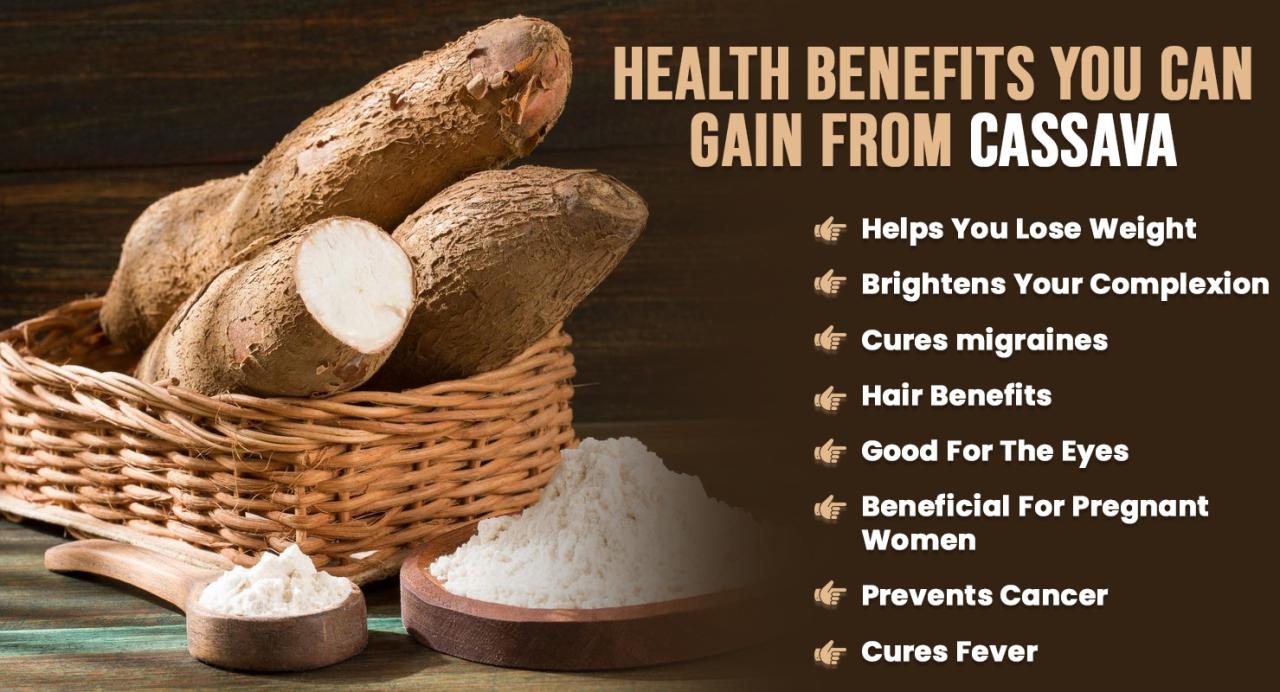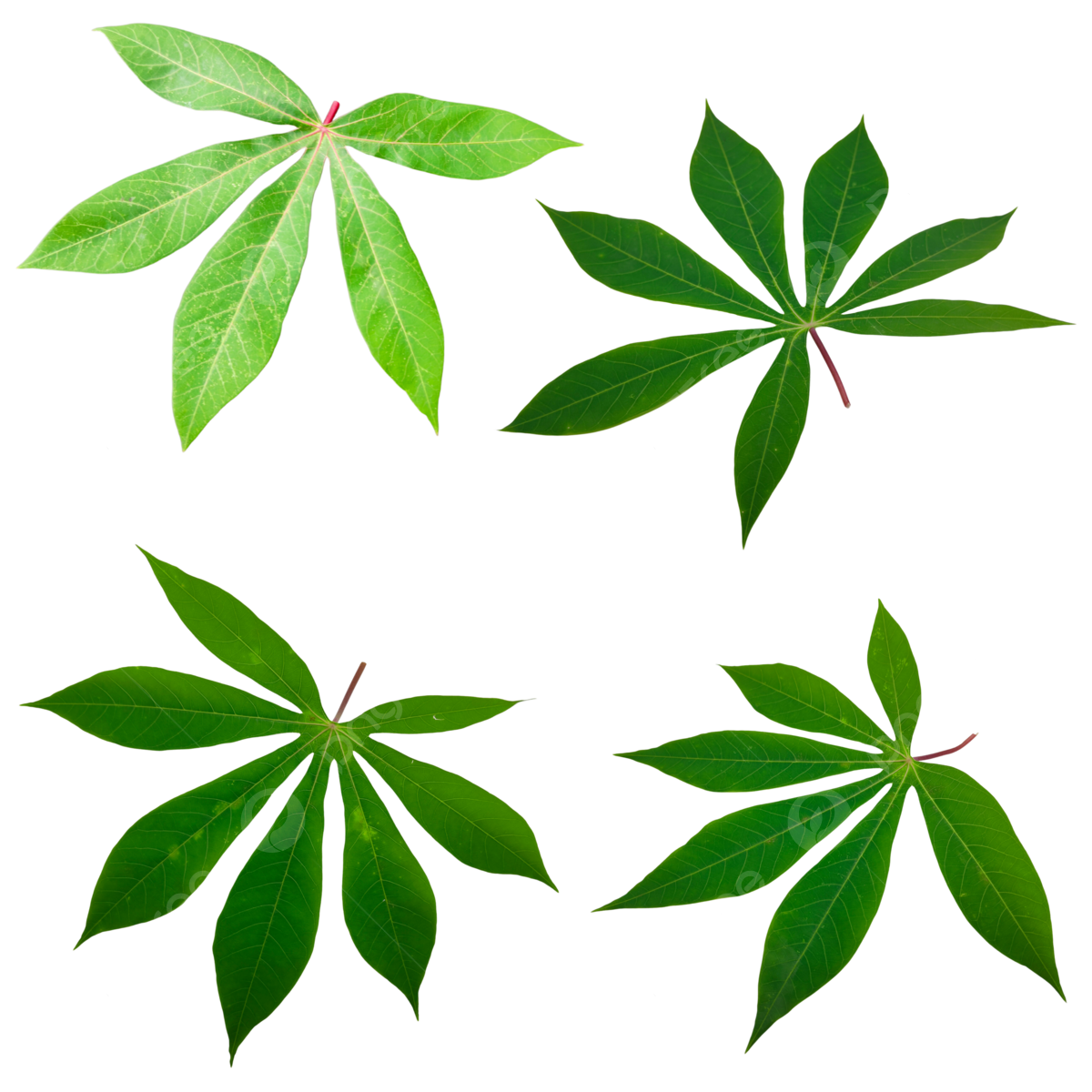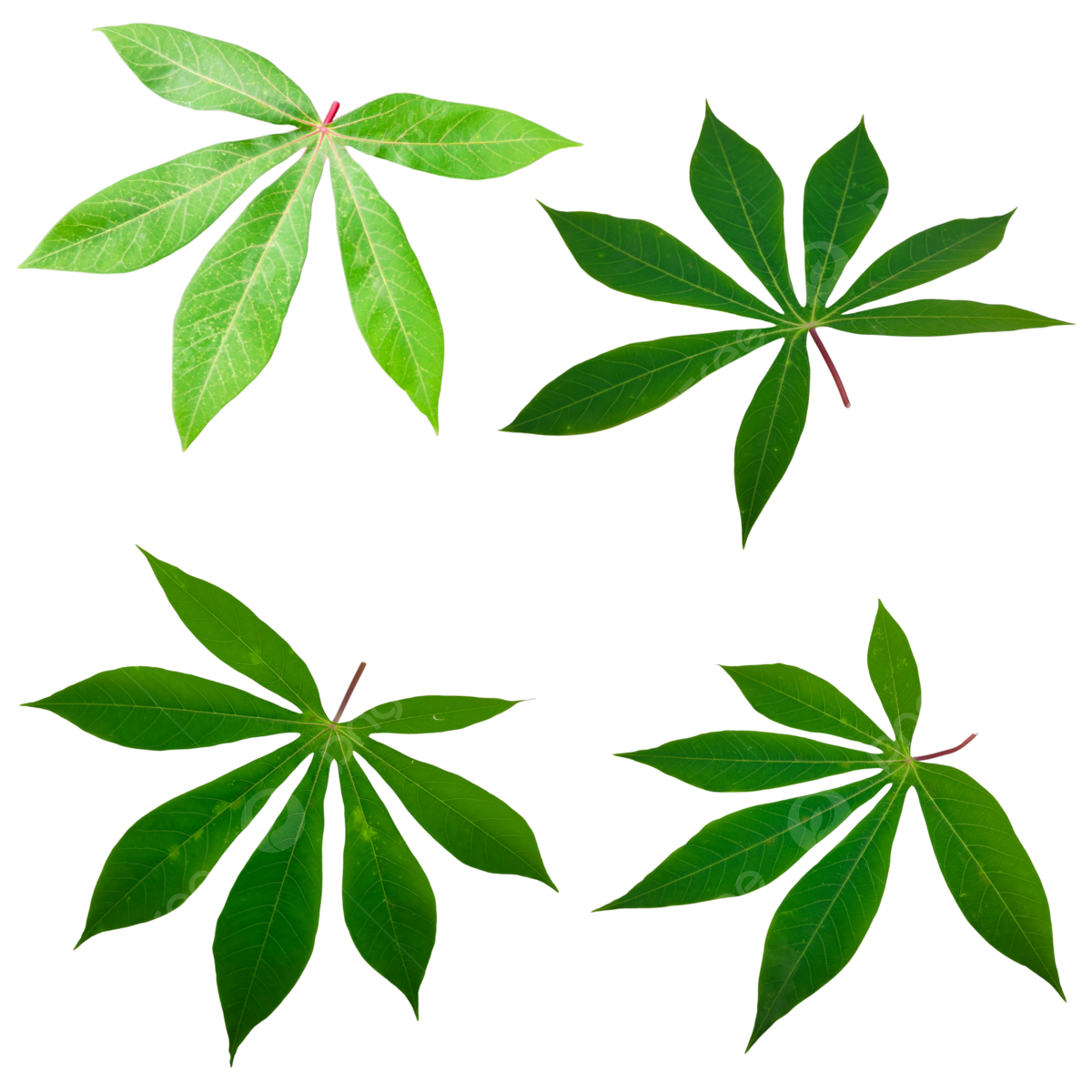Cassava Leaf: The Secret Ingredient for Delicious and Nutritious Meals, a phrase that might sound unfamiliar to some, holds the key to unlocking a world of culinary possibilities. Often overlooked, cassava leaves are a nutritional powerhouse, boasting a wealth of vitamins, minerals, and antioxidants.
These leafy greens, a staple in many cultures, offer a unique flavor profile and versatility in the kitchen, making them a perfect addition to both traditional and modern dishes.
From vibrant salads to hearty soups and stews, cassava leaves can be incorporated into a variety of cuisines, adding a distinct taste and texture. This article delves into the nutritional benefits of cassava leaves, explores their culinary uses, and provides insights into how they can be incorporated into modern dishes, showcasing their potential as a sustainable and nutritious ingredient for the future of food.
Cassava Leaf: A Nutritional Powerhouse
Cassava leaves, also known as cassava greens, are a highly nutritious and versatile leafy green vegetable that has been a staple food in many tropical and subtropical regions for centuries. Often overlooked as a culinary ingredient, cassava leaves are a treasure trove of essential vitamins, minerals, and antioxidants, making them a valuable addition to a healthy diet.
Nutritional Profile of Cassava Leaves
Cassava leaves are a rich source of various essential nutrients, including vitamins, minerals, and antioxidants. Their nutritional profile makes them a valuable addition to a balanced diet, contributing to overall health and well-being.
- Vitamins:Cassava leaves are particularly rich in vitamin A, vitamin C, vitamin K, and folate. Vitamin A, crucial for healthy vision and immune function, is present in abundance. Vitamin C, a potent antioxidant, supports collagen production and immune system function.
Vitamin K, essential for blood clotting and bone health, is also found in significant amounts. Folate, crucial for cell growth and development, is vital during pregnancy.
- Minerals:Cassava leaves are a good source of minerals like iron, calcium, magnesium, and potassium. Iron, essential for red blood cell production, helps prevent anemia. Calcium, crucial for bone health and muscle function, is vital for overall well-being. Magnesium, essential for energy production and muscle function, supports overall health.
Potassium, crucial for regulating blood pressure and fluid balance, is vital for cardiovascular health.
- Antioxidants:Cassava leaves are rich in antioxidants, including flavonoids and phenolic compounds. These antioxidants help protect cells from damage caused by free radicals, reducing the risk of chronic diseases like heart disease and cancer.
Comparison with Other Leafy Green Vegetables
When compared to other popular leafy green vegetables, cassava leaves stand out for their unique nutritional profile.
Nutrient |
Cassava Leaves |
Spinach |
Kale |
Collard Greens |
|---|---|---|---|---|
Vitamin A (IU) |
10,000 |
9,000 |
10,000 |
8,000 |
Vitamin C (mg) |
100 |
30 |
80 |
40 |
Iron (mg) |
5 |
3 |
2 |
3 |
Calcium (mg) |
150 |
300 |
150 |
200 |
Health Benefits of Consuming Cassava Leaves
Consuming cassava leaves offers a range of health benefits, contributing to overall well-being.
- Boosting Immunity:The high vitamin C content in cassava leaves supports a healthy immune system, helping to fight off infections and diseases.
- Improving Digestion:Cassava leaves are rich in dietary fiber, which promotes healthy digestion and prevents constipation.
- Promoting Cardiovascular Health:The potassium content in cassava leaves helps regulate blood pressure, reducing the risk of heart disease.
- Supporting Blood Sugar Control:Cassava leaves have a low glycemic index, making them a suitable food for people with diabetes.
- Protecting Against Cancer:The antioxidants in cassava leaves help protect cells from damage caused by free radicals, reducing the risk of cancer.
Culinary Uses of Cassava Leaves

Cassava leaves, a nutrient-rich and versatile ingredient, have been a staple in many cultures for centuries. From traditional dishes to modern culinary creations, cassava leaves offer a unique flavor profile and a wealth of nutritional benefits. This section explores the diverse ways in which cassava leaves are incorporated into various cuisines, highlighting their culinary versatility.
Traditional Recipes from Different Cultures
Cassava leaves are a cherished ingredient in various cuisines worldwide, often playing a central role in traditional dishes. The leaves are typically boiled, steamed, or sautéed, adding a distinct earthy flavor and a vibrant green hue to the culinary creations.
- West Africa:In West Africa, cassava leaves are commonly used in a dish called ” Egusi Soup,” a hearty soup made with ground melon seeds, vegetables, and meat or fish. The leaves add a distinct flavor and a vibrant green hue to the soup.
- Southeast Asia:In Southeast Asia, cassava leaves are often used in a dish called ” Laing,” a Filipino dish featuring coconut milk, shrimp paste, and ginger. The leaves are sautéed with these ingredients, resulting in a rich and flavorful dish.
- Latin America:In Latin America, cassava leaves are used in a variety of dishes, including ” Manihot,” a Brazilian dish featuring cassava leaves, coconut milk, and spices. The leaves are typically cooked with the other ingredients, resulting in a savory and aromatic dish.
Modern Recipe for a Cassava Leaf Dish
This recipe combines the earthy flavor of cassava leaves with the sweetness of coconut milk and the spice of ginger, creating a unique and flavorful dish. The dish is simple to prepare and can be enjoyed as a side dish or a main course.
Cassava Leaf and Coconut Curry
Ingredients:
- 1 pound cassava leaves, washed and chopped
- 1 cup coconut milk
- 1 tablespoon ginger, minced
- 1/2 teaspoon turmeric powder
- 1/4 teaspoon red pepper flakes (optional)
- Salt and pepper to taste
- Oil for cooking
Instructions:
- Heat oil in a large pot or skillet over medium heat.
- Add ginger and cook for 1 minute, or until fragrant.
- Add cassava leaves and cook for 5 minutes, or until wilted.
- Pour in coconut milk, turmeric powder, and red pepper flakes (optional). Bring to a boil, then reduce heat and simmer for 10 minutes, or until the sauce thickens.
- Season with salt and pepper to taste.
- Serve hot over rice or with naan bread.
Comparing Different Cooking Methods for Cassava Leaves
Cassava leaves can be cooked using various methods, each resulting in a unique texture and flavor profile. The choice of cooking method often depends on the specific dish being prepared and the desired outcome.
Cassava leaves, often overlooked, are a versatile ingredient that adds a unique flavor and nutritional boost to many dishes. While their culinary potential is undeniable, their visual appeal can also be harnessed. For those seeking a touch of autumn charm, consider crafting a beautiful DIY garland using vibrant fall leaves as inspiration from Craft the Perfect Fall Decoration: DIY Autumn Leaf Garland Ideas.
Just like the vibrant colors of autumn leaves add warmth to your home, cassava leaves bring a vibrant, earthy touch to your meals.
Cooking Method |
Description |
Texture |
Flavor |
|---|---|---|---|
Boiling |
Cassava leaves are submerged in boiling water until tender. |
Soft and tender |
Mild and earthy |
Steaming |
Cassava leaves are steamed over boiling water until tender. |
Slightly firmer than boiled |
More pronounced earthy flavor |
Frying |
Cassava leaves are fried in oil until crisp. |
Crispy and crunchy |
Slightly nutty flavor |
Sautéing |
Cassava leaves are cooked in oil over medium heat until wilted. |
Soft and slightly wilted |
More pronounced earthy flavor |
Cassava Leaf in Modern Cuisine

Cassava leaves, a nutritional powerhouse, are gaining popularity in modern cuisine, finding their way into various dishes and culinary trends. Their versatility and unique flavor profile make them a valuable addition to contemporary food creations.
Incorporating Cassava Leaves into Contemporary Dishes
Cassava leaves can be seamlessly integrated into a wide array of contemporary dishes, offering a diverse range of culinary possibilities.
- Salads:Cassava leaves can add a unique texture and flavor to salads. They can be used raw, blanched, or sautéed and combined with other ingredients like grilled vegetables, fruits, nuts, and cheeses. For instance, a vibrant salad could feature a mix of blanched cassava leaves, grilled bell peppers, cherry tomatoes, crumbled feta cheese, and a citrus vinaigrette.
- Soups and Stews:Cassava leaves are a flavorful addition to soups and stews, imparting a savory and earthy note. They can be added towards the end of cooking to retain their texture and vibrant green color. A hearty vegetable stew could incorporate cassava leaves, diced tomatoes, carrots, potatoes, and a flavorful broth.
- Stir-Fries:Cassava leaves are an excellent addition to stir-fries, providing a healthy and nutritious alternative to traditional leafy greens. They can be stir-fried with various vegetables, tofu, or meat, adding a unique depth of flavor. A flavorful stir-fry could feature cassava leaves, ginger, garlic, soy sauce, mushrooms, and your choice of protein.
Innovative Culinary Techniques
Modern chefs are constantly exploring innovative techniques to enhance the flavor and texture of cassava leaves.
- Blanching:Blanching cassava leaves before cooking helps to soften their texture and retain their vibrant green color. This technique is particularly useful for salads and stir-fries.
- Sautéing:Sautéing cassava leaves with garlic, onions, and spices adds a depth of flavor and aroma. This technique is suitable for stir-fries, soups, and stews.
- Fermenting:Fermenting cassava leaves can create a unique and complex flavor profile, similar to kimchi. This technique can be used to create fermented dips, sauces, and side dishes.
Potential as a Sustainable and Nutritious Ingredient, Cassava Leaf: The Secret Ingredient for Delicious and Nutritious Meals
Cassava leaves hold immense potential as a sustainable and nutritious ingredient for modern food trends.
- Sustainability:Cassava is a drought-tolerant crop, making it a sustainable and resilient food source in regions facing water scarcity. Utilizing the leaves as a food source reduces food waste and promotes sustainable agriculture.
- Nutritional Value:Cassava leaves are rich in vitamins, minerals, and antioxidants, making them a valuable addition to a healthy diet. They are a good source of vitamin A, vitamin C, iron, and calcium.
- Food Security:Cassava leaves can contribute to food security, particularly in developing countries where they are a staple food. Their versatility and nutritional value make them a valuable resource for addressing food shortages.
Growing and Harvesting Cassava Leaves: Cassava Leaf: The Secret Ingredient For Delicious And Nutritious Meals

Cassava leaves, a nutritional powerhouse, are gaining popularity as a culinary ingredient. Growing cassava plants is relatively straightforward, and with proper care, you can enjoy a continuous supply of fresh, nutritious leaves.
Soil Requirements for Cassava Plants
Cassava plants thrive in well-drained, sandy loam soils with a pH range of 5.5 to 6.5. They prefer warm climates and can tolerate drought conditions. The soil should be rich in organic matter to provide essential nutrients.
While cassava leaves are a hidden gem in the culinary world, adding a touch of the exotic to your garden can be just as rewarding. Consider incorporating the striking papyrus plant, a symbol of ancient Egypt, for a unique and visually stunning landscape.
How to Create an Exotic and Beautiful Garden with Papyrus Plant: Expert Tips can guide you in creating a thriving oasis. Just as the papyrus plant adds a touch of the exotic to your garden, cassava leaves can add a unique flavor and nutritional boost to your meals.
Planting Techniques for Cassava Plants
- Planting Time:The ideal time to plant cassava is during the rainy season or when the soil is moist.
- Spacing:Space cassava plants 1-2 feet apart in rows that are 3-4 feet apart.
- Planting Depth:Plant cassava cuttings or seedlings 2-3 inches deep in the soil.
- Watering:Water the plants regularly, especially during the first few weeks after planting. Once established, cassava plants are drought-tolerant.
Pest Control Measures for Cassava Plants
Cassava plants are susceptible to various pests, including:
- Cassava Mealybug:These insects feed on the sap of cassava plants, causing stunted growth and leaf discoloration. They can be controlled using biological control agents or insecticides.
- Cassava Green Mite:These mites feed on the underside of cassava leaves, causing stippling and leaf drop. Use miticides or biological control agents to manage them.
- Cassava Mosaic Virus:This virus is spread by whiteflies and causes mosaic patterns on the leaves. There is no cure for cassava mosaic virus, so prevention is key. Use resistant varieties and control whitefly populations.
Harvesting Cassava Leaves
- Harvesting Time:Harvest cassava leaves when they are young and tender, typically 4-6 months after planting.
- Harvesting Technique:Pick the leaves from the top of the plant, leaving the lower leaves to continue photosynthesis. Avoid harvesting all leaves at once to allow the plant to regenerate.
- Storage:Store harvested cassava leaves in a cool, dry place for up to 2 days. To preserve their freshness, you can also blanch them and freeze them for later use.
Sustainable Practices in Cassava Leaf Production
- Organic Farming:Use organic fertilizers and pest control methods to minimize environmental impact and promote soil health.
- Crop Rotation:Rotate cassava with other crops to reduce pest and disease pressure and improve soil fertility.
- Water Conservation:Use efficient irrigation techniques to conserve water and minimize water usage.
- Integrated Pest Management:Implement an integrated pest management approach that combines biological control, cultural practices, and chemical control only when necessary.
Conclusive Thoughts
As we’ve explored, cassava leaves are more than just a humble green; they are a culinary treasure waiting to be discovered. Their nutritional value, versatility in the kitchen, and potential for sustainable food systems make them a valuable addition to any diet.
By embracing this “secret ingredient,” we can unlock a world of delicious and nutritious meals, while contributing to a healthier and more sustainable future.
FAQs
Are cassava leaves safe to eat?
Yes, cassava leaves are safe to eat when properly prepared. However, it’s crucial to remove the bitter compounds, known as cyanogenic glycosides, through boiling or steaming before consumption.
Where can I find cassava leaves?
Cassava leaves are readily available in many grocery stores, especially those specializing in Asian or African products. You can also find them at farmers’ markets or online retailers.
What does cassava leaf taste like?
Cassava leaves have a slightly bitter and earthy flavor that is often described as similar to spinach or kale. Their taste can vary depending on the preparation method and the variety of cassava.
